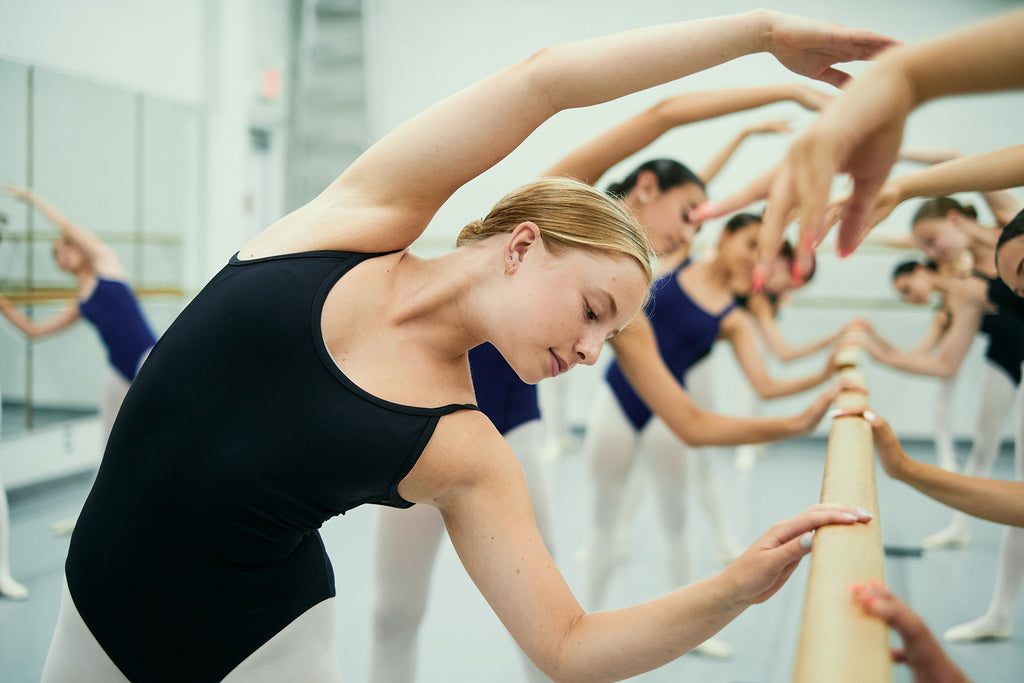Today, young dancers are flooded with images of often unrealistically hypermobile (flexible) dancers. In the tradition of teaching as they were taught, many dance teachers stress the importance of stretching as much, and as often, as possible to achieve a desired aesthetic, increase range of motion (of joints) and to prevent injury. However, the amount and type of stretching a dancer requires to improve flexibility depends on the individual mobility of the dancer. Regardless of the amount of mobility a dancer displays, holding a stretch where a muscle is shaking is not necessary for improving flexibility and can be risky. This type of reaction to stretching indicates that the body is not sufficiently warmed up for flexibility training.
Expert fitness trainer Rhonda Roberts Smid explains that stretching is done to help increase range of motion and prepare the body for more dynamic movements, but also restore the body. In contrast, developing flexibility is a process where the sensations feel quite different for a dancer. There is more discomfort when you are developing flexibility. Roberts explains that contortionists, gymnasts, and dancers all work well beyond the normal range of motion. She suggests dancers should internally warm the body by using active movements then stretch before starting to train for flexibility. Flexibility takes time. Often the focus is on flexibility too soon and the muscle and the fascia (muscle casing) are just not ready to relax enough.


Roberts states: “So this is where the problems can arise. Children see other flexible kids on social media and they try to copy what they see, but their bodies are not prepared. Having proper alignment is key, but you also need to ‘play’ within your comfortable range to help loosen the muscle. For example, when attempting to do a forward fold to stretch hamstrings experiment with stretching forward in parallel positions as well as turned out and turned in. This just allows you to stretch all of the hamstrings. You need the muscle and fascia to relax in all different directions so that when you are training for flexibility you will have more success.”
Overall, I agree with Roberts. Additionally, I strongly believe that stretches should not cause pain or discomfort in joints (such as knees or ankles). If the dancer is feeling pain in their joints, they need to inform the teacher and the teacher can modify the stretch to relieve unnecessary pressure. Dancers need to understand that they are in charge of their own bodies and, especially in group classes, not all movements will work for all dancers. They should not be afraid to ask questions to become aware of the difference between the discomforts of stretching a muscle safely (with good alignment) and pain that maybe a result of improper stretching technique (such as joint pain). Discomfort is a dull ache that dancers can breath through easily, whereas pain is often sharp or alarming. Hypermobile (very flexible) dancers can reduce stretching and instead strengthen muscles to help stabilize their joints for better balance, better alignment, safer landings from jumps and injury prevention.
All dancers should have a healthy balance of stretch and strength to prevent injury.


